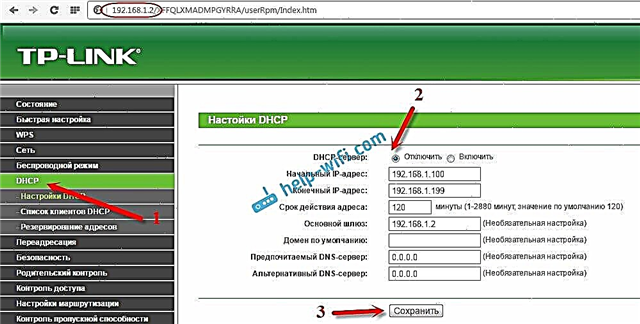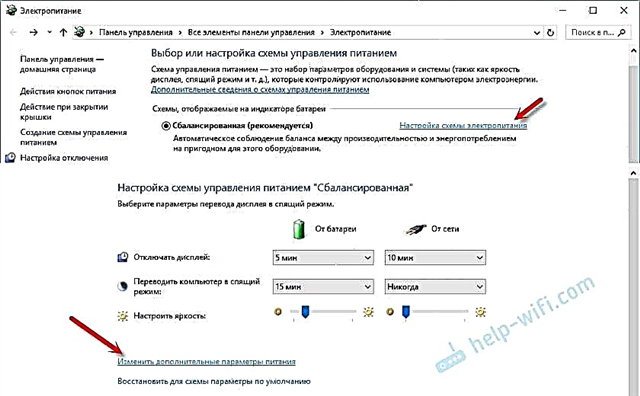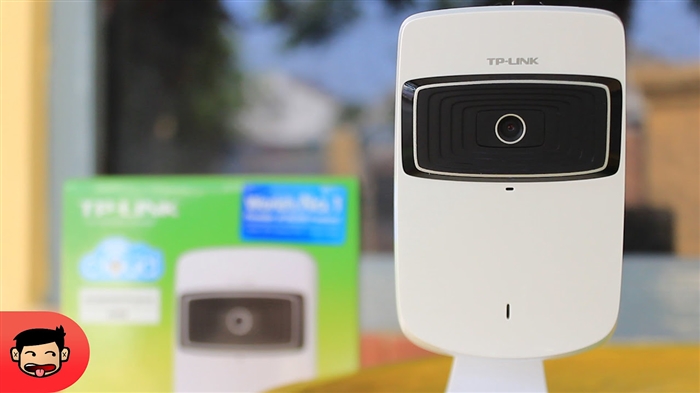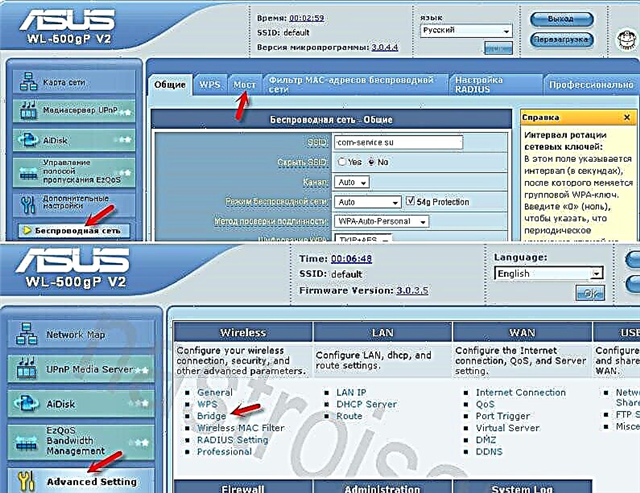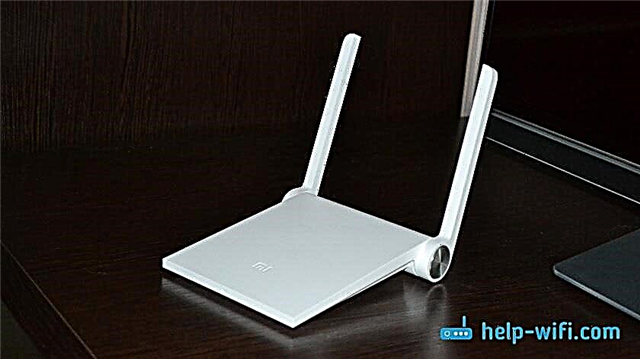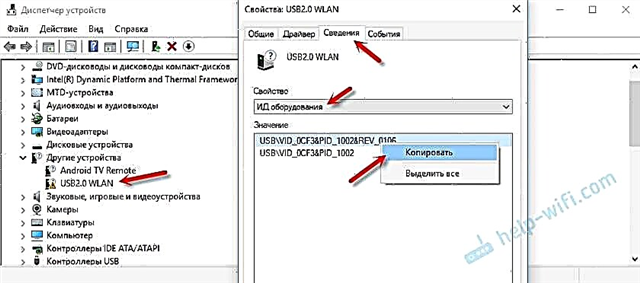TP-Link has many good Wi-Fi adapters that you can use to connect to wireless networks on desktops and laptops. TL-WN822N is perfect for PC. Especially if you need a powerful adapter with good signal reception. It can also be used with laptops, but it is not very compact. Compared to the same TP-Link TL-WN725N. But faster and more powerful. And Wi-Fi will be better to catch.
I think that for a stationary computer TP-Link TL-WN822N is generally ideal. It connects via the included USB cable. Cable 1.5 meters long. This allows the adapter to be brought onto a table for even better reception. The cable is of high quality (compared to cheap extension cords), which also has a good effect on the operation of the adapter itself.
From the technical characteristics, I want to highlight the speed of a Wi-Fi network up to 300 Mbps and two external antennas with a power of 3dBi. Thanks to external antennas, we get strong and stable Wi-Fi signal reception. There is a SoftAP mode - you can distribute the Internet via Wi-Fi.
The adapter itself is made of white plastic. The antennas are folded. There is a QSS button for quick connection to Wi-Fi networks. It's nice that rubber feet were made from below, thanks to which the adapter does not slip and stands firmly on the table.

Basically, when installing and configuring Wi-Fi adapters, there are problems with drivers and compatibility with different versions of Windows. In this article, I will show you how to find a driver for TP-Link TL-WN822N for your hardware version. We will also consider various problems: when the adapter does not work, or does not see the Wi-Fi network.
This is a fairly popular model that has been on the market for a very long time. There are already 5 hardware versions of this adapter. And in the reviews there is a lot of information from which you can understand whether this adapter will work, for example, in Windows 10, what hardware version is needed, which driver to download, etc.
And before moving on to the setup, I want to parse exactly the hardware versions and compatibility with Windows 10, Windows 8, Windows 7 and Windows XP.
To find out the hardware version of the TL-WN822N, you need to look at the sticker on the bottom of the adapter.

As you can see, I have the very first version (Ver: 1.0). If you just bought an adapter, or are going to buy, then you will already have a new hardware version. You can check with the seller what hardware version their adapters have.
Let's consider everything in more detail:
- Ver: 5.0 - The newest version. As far as I understand, it is not yet massively sold (at the time of this writing). On the TP-Link website, so far there are drivers for this version only for Mac OS.
- Ver: 4.0 - There is support for all versions of Windows. Only for the fourth hardware version, the site has drivers specifically for Windows 10.
- Ver: 3.0 - Also works in all versions of Windows (Vista / XP / 7/8 / 8.1). Even though there is no way to download a driver for Windows 10, everything works fine. Immediately after connecting the "ten" itself installs the necessary driver. Judging by the reviews, I have not tested.
- Ver: 2.0 and 1.0 - Already old versions of TL-WN822N, which most likely are not on sale. There is official support for Windows XP, Vista, 7 and 8 (V2 only). Everything works in Windows 10 the same way. But the driver must be found and installed manually. This is not difficult.
It is important to understand one thing: you don't need a driver specifically for the adapter. Each adapter runs on a specific chipset. And it is enough to find and install the driver for this particular chipset.
Connecting and installing the driver on TP-Link TL-WN822N
It's easy to connect. Something like this:

We are waiting for 15 seconds and see if the system has automatically detected the adapter. As I wrote above, Windows 10 can install the driver itself. The Wi-Fi network icon should appear (right, bottom). This means that you can connect to Wi-Fi networks. Or you can check in Device Manager. If there is a Wireless Network Adapter, WLAN, or 802.11, then everything is fine, nothing else needs to be installed.
If the adapter is detected, but does not see the Wi-Fi network (red cross on the icon), then see the solution at the end of the article.
Driver download from TP-Link website, or installation from disk
Do not forget that a disc is included with the adapter. It has drivers for a specific hardware version. And they can be installed from there. But it's better, of course, to download everything from the official site. There are always the newest drivers.
You must follow the link http://www.tp-linkru.com/download/TL-WN822N.html
Select your hardware version (I showed you how to determine it above in this article) and go to the "Driver" tab.

Download the required driver. Depending on the operating system you have installed.

To install simply run the file Setup.exe from the downloaded archive.
If there is no Setup.exe file:
- You need to extract files (folder) from the archive.
- Go to the device manager and right-click on the adapter, which will most likely be identified as "Other device" (Network controller, USB2.0 WLAN) and select "Update driver".
- Select "Search for drivers on this computer".
- Specify the path to the folder with drivers and click "Next".
If the driver is suitable, it will be installed.
If the adapter is not detected and there are no drivers (for Windows 10)
Now my case. TP-Link TL-WN822N adapter is my first hardware version (Ver: 1.0). The computer is running Windows 10. Immediately after connecting, nothing happened. The adapter was identified as "USB2.0 WLAN" and did not work accordingly.

Open the properties of this device and copy the equipment ID.

We are looking for a driver on the site https://devid.info/ru/. Download it and install it. Only I have shortened the search line to "USB VID_0CF3 & PID_1002 &". Otherwise it doesn't. Leave only the VID and PID value.
I will not show everything in detail, as I wrote about it in the article: network controller and USB2.0 WLAN. How to download a driver and what it is.
Everything worked for me. The driver "56969_TL-WN821N_WN822N_100629" (TP-LINK Wireless N Adapter) came up.
And even the oldest TL-WN822N (still Ver: 1.0) worked in Windows 10.

We figured out the installation.
What to do if TL-WN822N does not work, does not see Wi-Fi network
As for the problem, when, after installing and configuring the adapter, the available Wi-Fi networks are not displayed, and when the TP-Link utility window is inactive (if you installed it), this is solved by starting the WLAN autoconfiguration service. And I wrote about this in the article: the TP-Link adapter does not see the network, does not connect to Wi-Fi, the utility window is inactive. Everything is detailed there. When TL-WN822N does not see the network, then just start the WLAN service and everything will work.
Many people write that the adapter does not work. It is already necessary to understand here. See immediately if it is in the device manager. If it is identified with a yellow icon, then look for the required driver. If it is not detected at all, then check the connection, cable, connect it to another computer. We need to find a reason.
And finally, information for those who are going to distribute Wi-Fi via TP-Link TL-WN822N. If you installed a proprietary utility, then try through it. The SoftAP section, which must first be enabled in the utility settings. Or the standard tool, according to my instructions: how to distribute the Internet via a Wi-Fi adapter on a Windows 10 PC.
Leave your feedback about TL-WN822N in the comments. Share tips and of course ask questions. Good luck!

